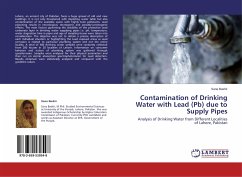Some of our recent studies of factors that influence the electrochemical behaviour of electrodeposited lead dioxide are briefly reviewed. In particular, doping of lead dioxide with different ions is discussed as a way of improving the stability and electrochemical activity in processes occurring at high potentials such as oxygen and ozone evolution, and the breakdown of phenolic pollutants by electrochemical methods. The experimental conditions chosen for the electrodeposition strongly influence the proton content (i.e., the defective structure) of the oxide. At low concentration of dopants, the oxygen evolution reaction is limited by the second-electron transfer (electrochemical desorption). The increase in the bond strength for chemisorbed oxygen results in a rise of the overvoltage for the oxygen evolution. The oxidation rate of phenolic compounds is proportional to the amount of oxygen-containing radicals produced during the water oxidation, which is proposed to use as a correlation parameter for predicting of electrocatalytic properties of materials based on lead dioxide in respect to the oxidation of organic compounds.








